Department of Mechanical Engineering
|
Concept
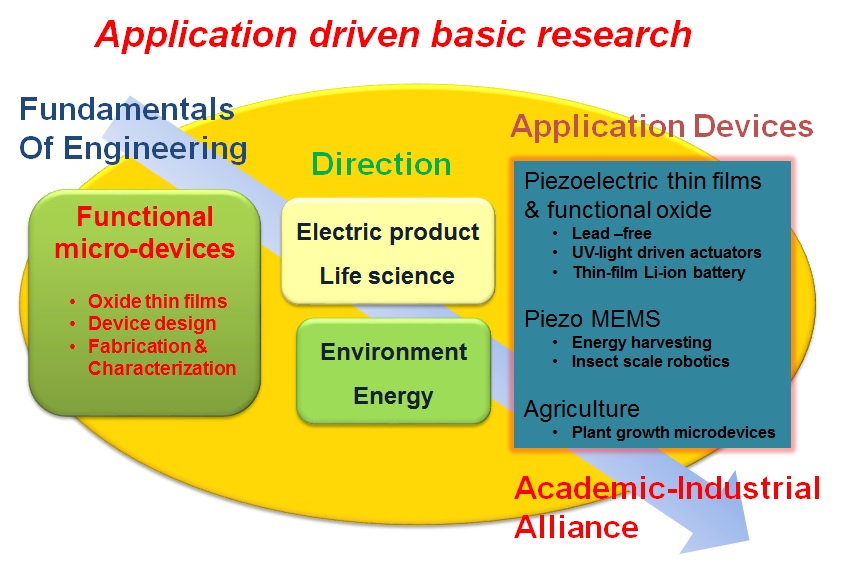
Contents
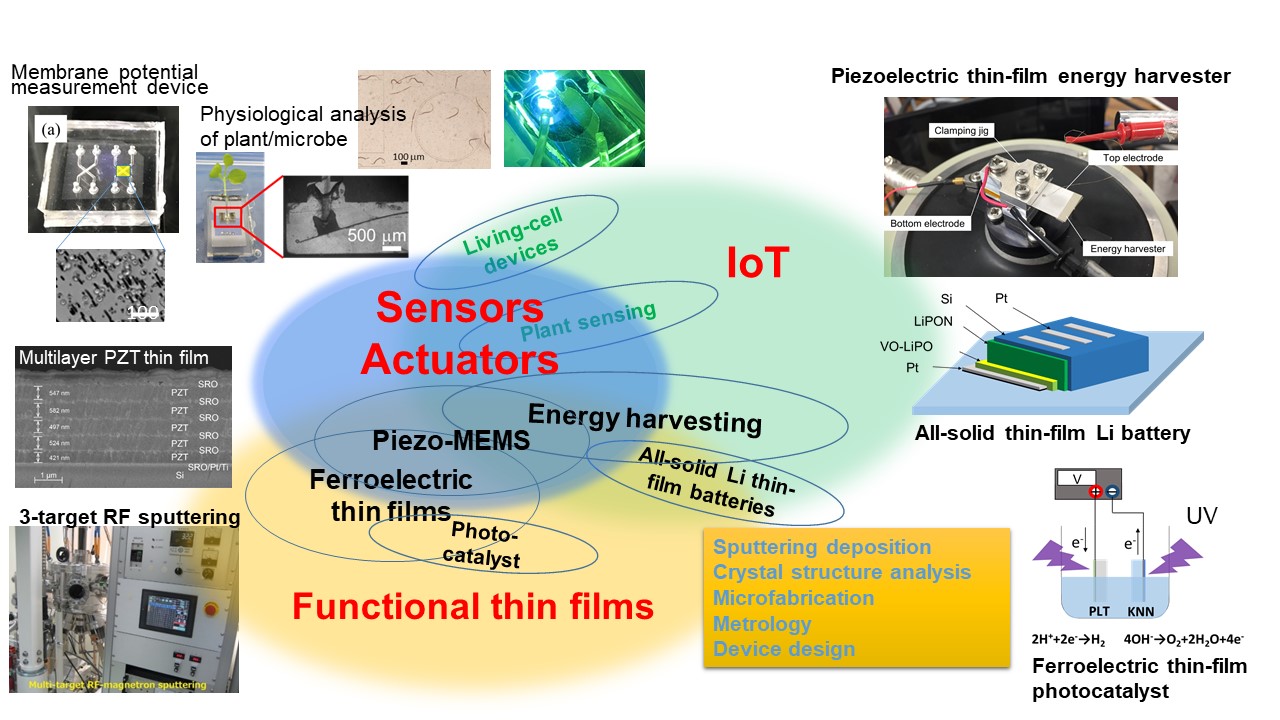
Functional oxide thin films
- 1. Piezoelectric thin films
- 2. All-solid-state amorphous thin-film battery
- 3. Measurement method of piezoelectric thin films
- 4. Wurtzite ferroelectric thin films
- 5. Photoelectrochemical effects in ferroelectric thin films
Functional microdevices
MEMS applications in biology
Functional oxide thin films
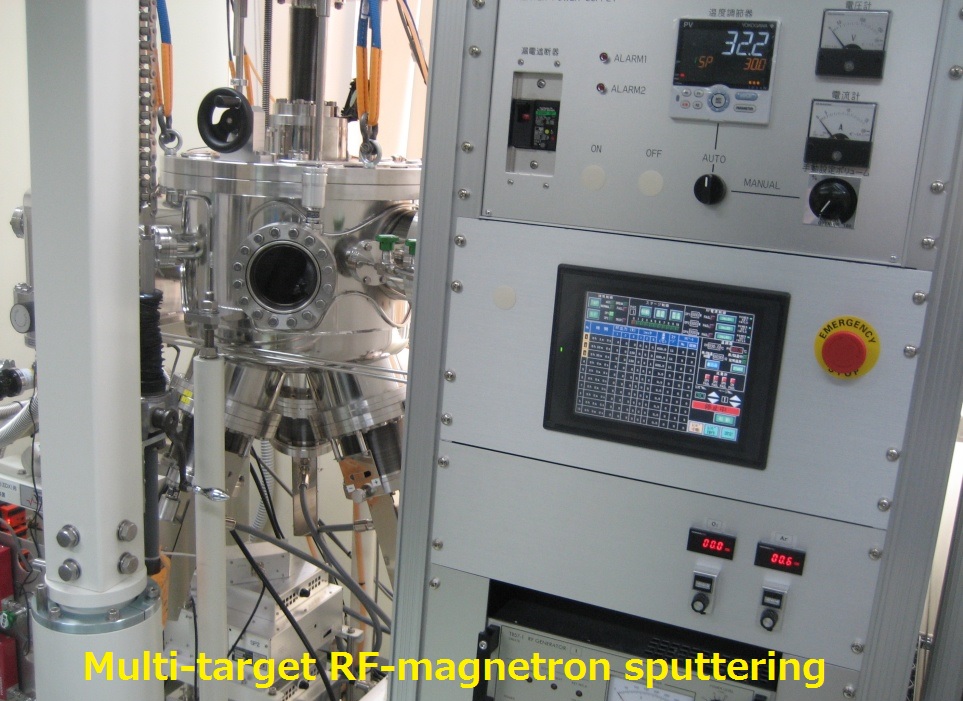 We have been studying piezoelectric thin films mainly deposited by sputtering method. We are working on the fabrication of Pb(Zr,Ti)O3-based thin films, and their artificial superlattice thin films, as well as on the precise analysis of crystal structures using synchrotron XRD of SPring-8 In addition, we are investigating (K,Na)NbO3-based piezoelectric thin films as environmental-friendly piezoelectric thin film materials.
We have been studying piezoelectric thin films mainly deposited by sputtering method. We are working on the fabrication of Pb(Zr,Ti)O3-based thin films, and their artificial superlattice thin films, as well as on the precise analysis of crystal structures using synchrotron XRD of SPring-8 In addition, we are investigating (K,Na)NbO3-based piezoelectric thin films as environmental-friendly piezoelectric thin film materials.2. All-solid-state amorphous thin-film battery
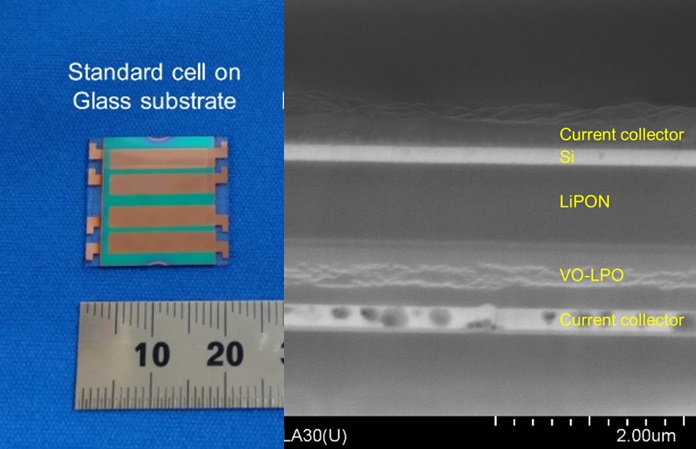 While R&D of lithium-ion batteries (LIBs) for large power storage is currently booming, research on microbatteries integrated on a chip to drive microdevices is also attracting attention. We have been fabricated all-solid-state thin-film LIBs by multilayered deposition of electrode active materials and solid electrolytes as amorphous thin films, and investigated their charge-discharge characteristics.
While R&D of lithium-ion batteries (LIBs) for large power storage is currently booming, research on microbatteries integrated on a chip to drive microdevices is also attracting attention. We have been fabricated all-solid-state thin-film LIBs by multilayered deposition of electrode active materials and solid electrolytes as amorphous thin films, and investigated their charge-discharge characteristics.
3. Measurement method of piezoelectric thin films
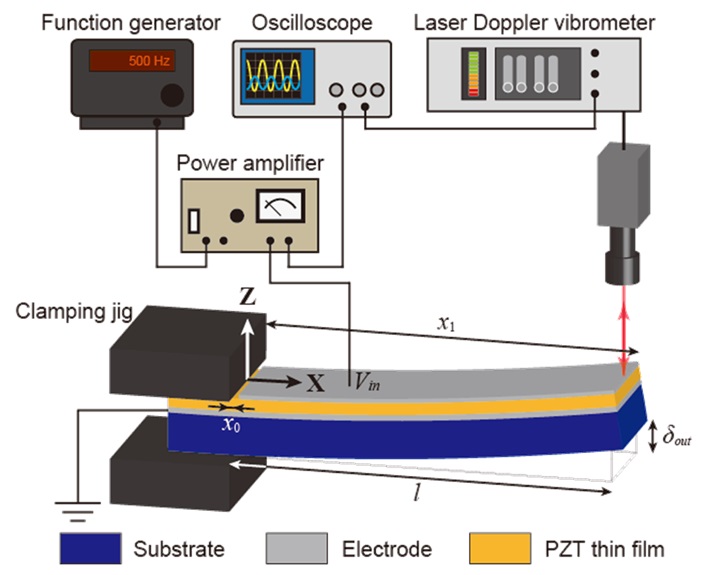 We have developed a measurement system of the transverse piezoelectric effect of thin films with high accuracy. This piezoelectric thin film evaluation technique has been adopted as an IEC international standard and is used as an essential technology for piezoelectric MEMS technology. Fig. shows the converse piezoelectric property evaluation system using a unimorph cantilever.
We have developed a measurement system of the transverse piezoelectric effect of thin films with high accuracy. This piezoelectric thin film evaluation technique has been adopted as an IEC international standard and is used as an essential technology for piezoelectric MEMS technology. Fig. shows the converse piezoelectric property evaluation system using a unimorph cantilever.
4. Wurtzite ferroelectric thin films
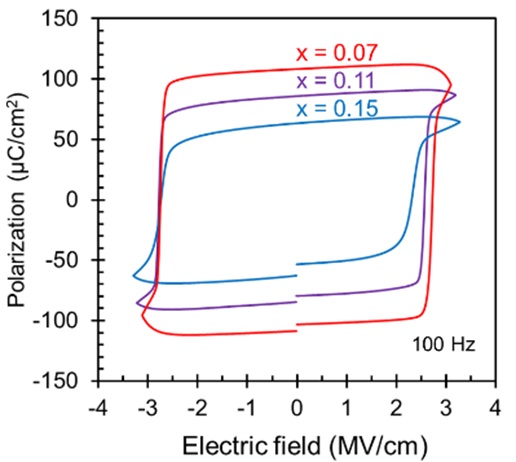 Wurtzite hexagonal crystals such as AlN and ZnO have been classified as piezoelectric materials belonging to pyroelectric materials. Recently, it has been reported that doping into these thin films not only improves piezoelectric properties but also induces ferroelectricity. We have focused on ZnO thin films and have been investigating to improve piezoelectric properties or to apply them to semiconductor memories. Fig. shows the P-E hysteresis curves of (Ce,Mn)-substituted ZnO thin films on Si substrate.
Wurtzite hexagonal crystals such as AlN and ZnO have been classified as piezoelectric materials belonging to pyroelectric materials. Recently, it has been reported that doping into these thin films not only improves piezoelectric properties but also induces ferroelectricity. We have focused on ZnO thin films and have been investigating to improve piezoelectric properties or to apply them to semiconductor memories. Fig. shows the P-E hysteresis curves of (Ce,Mn)-substituted ZnO thin films on Si substrate.
5. Photoelectrochemical effects in ferroelectric thin films
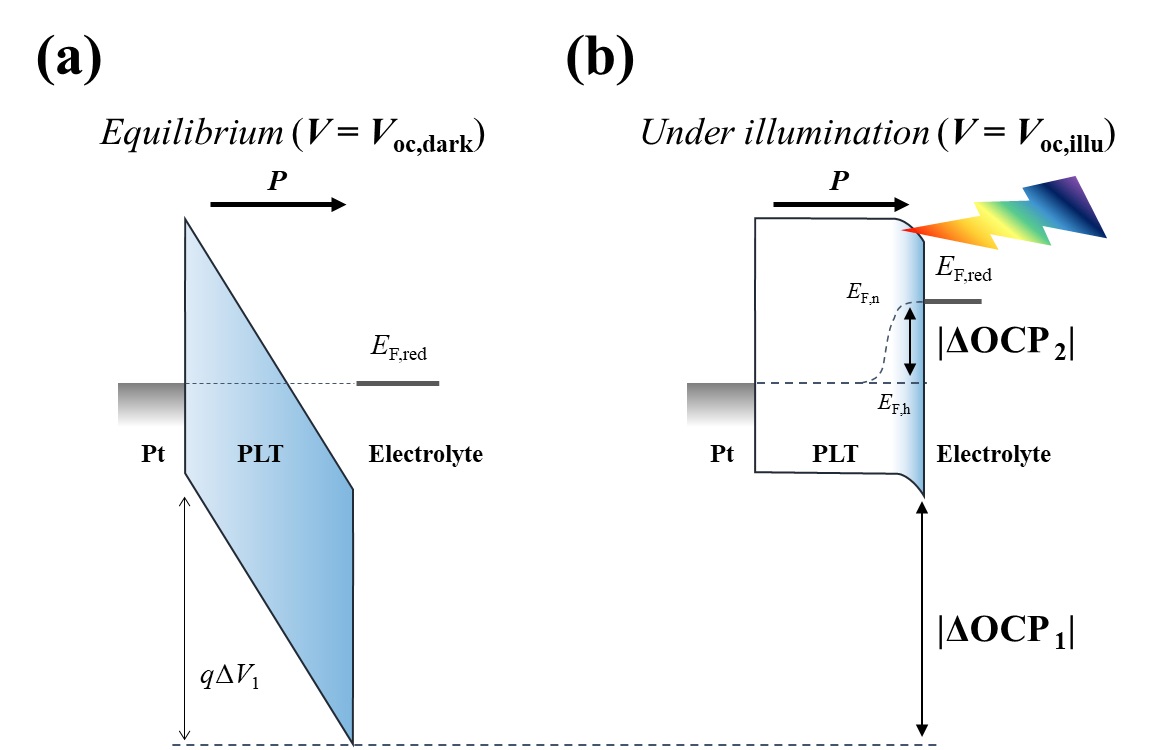 Ferroelectrics are known to have large spontaneous polarization and generate large voltages upon photoirradiation. We have been studying La-doped PbTiO3 (PLT) epitaxial thin films as photoelectrodes for water splitting or CO2 reduction. Fig. shows the reaction mechanism of water splitting using PLT thin film as a photocathode.
Ferroelectrics are known to have large spontaneous polarization and generate large voltages upon photoirradiation. We have been studying La-doped PbTiO3 (PLT) epitaxial thin films as photoelectrodes for water splitting or CO2 reduction. Fig. shows the reaction mechanism of water splitting using PLT thin film as a photocathode.
Functional microdevices
6. Piezoelectric thin-film energy harvesting
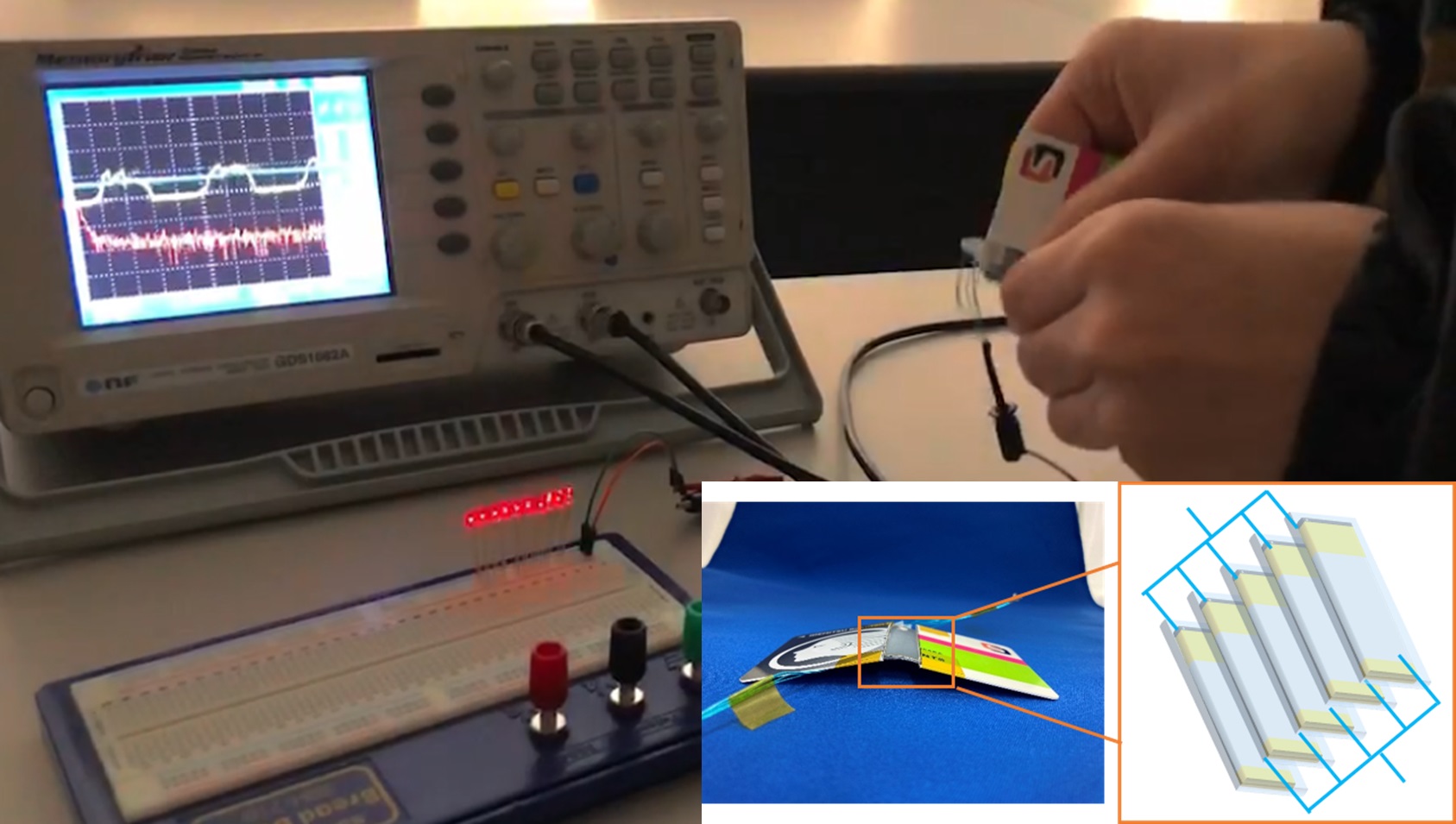 Energy harvesting, in which environmental vibration is converted into electrical energy with high efficiency and used as a power source for sensor nodes, has attracted much attention. This technology is expected to contribute to safety, security, energy saving, and resource conservation by enabling autonomous, decentralized, and maintenance-free sensor networks. We have been conducting research on piezoelectric thin-film power generation devices, especially piezoelectric thin films fabricated on flexible metal foils, and evaluating their power generation characteristics. The photo shows a card-type piezoelectric thin-film power generater.
Energy harvesting, in which environmental vibration is converted into electrical energy with high efficiency and used as a power source for sensor nodes, has attracted much attention. This technology is expected to contribute to safety, security, energy saving, and resource conservation by enabling autonomous, decentralized, and maintenance-free sensor networks. We have been conducting research on piezoelectric thin-film power generation devices, especially piezoelectric thin films fabricated on flexible metal foils, and evaluating their power generation characteristics. The photo shows a card-type piezoelectric thin-film power generater.
7. Piezoelectric thin-film acoustic devices
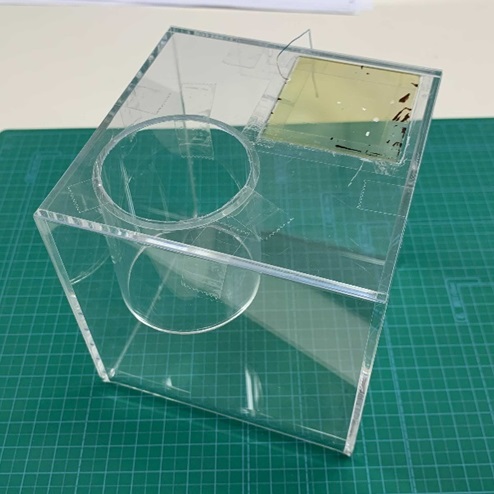 Demand for microphones and speakers with high sound quality and low power consumption is increasing, especially for smartphones. We are developing new type of piezoelectric thin-film acoustic devices for application in mobile devices. We also conduct research on ultrasonic devices and piezoelectric tactile devices as joint research with related companies. Fig shows a transparent piezoelectric speaker using PZT thin film deposited on a glass substrate.
Demand for microphones and speakers with high sound quality and low power consumption is increasing, especially for smartphones. We are developing new type of piezoelectric thin-film acoustic devices for application in mobile devices. We also conduct research on ultrasonic devices and piezoelectric tactile devices as joint research with related companies. Fig shows a transparent piezoelectric speaker using PZT thin film deposited on a glass substrate.
Plant growth MEMS
8. Plant growth monitoring devices
 We developed an on-chip analytical method for studying physical/biological mechanisms of plant root growth in soil environments. This on-chip system has silicon-based microchannel device integrated with force displacement sensor which mimics a barrier in soil. By using this microsystem, we have successfully characterized the driving forces of root growth in three kinds of plants including Arabidopsis thaliana, which is known as a model organism. This analytical method allows us to efficiently characterize potential adaptability of root system to soil environments at early growth stage. Moreover, the gaining knowledge might contribute for breed improvement, in terms of increasing crop productivity and plant biomass in the future.
We developed an on-chip analytical method for studying physical/biological mechanisms of plant root growth in soil environments. This on-chip system has silicon-based microchannel device integrated with force displacement sensor which mimics a barrier in soil. By using this microsystem, we have successfully characterized the driving forces of root growth in three kinds of plants including Arabidopsis thaliana, which is known as a model organism. This analytical method allows us to efficiently characterize potential adaptability of root system to soil environments at early growth stage. Moreover, the gaining knowledge might contribute for breed improvement, in terms of increasing crop productivity and plant biomass in the future.
9. Microfluidic devices for nematode behavior analysis
 Plant-parasitic nematodes substantially damage a wide variety of agricultural crops worldwide. The chemotaxis of nematodes is a key factor in their parasitic relationship with plants. We developed a new, efficient, and quantitative method to analyze chemotaxis of the plant-parasitic nematode, Meloidogyne incognita, using a PDMS microchannel device. Using this assay method, we have shown that several chemicals stimulate the behavior of Meloidogyne incognita, one of most damaging plant-parasitic nematodes.
Plant-parasitic nematodes substantially damage a wide variety of agricultural crops worldwide. The chemotaxis of nematodes is a key factor in their parasitic relationship with plants. We developed a new, efficient, and quantitative method to analyze chemotaxis of the plant-parasitic nematode, Meloidogyne incognita, using a PDMS microchannel device. Using this assay method, we have shown that several chemicals stimulate the behavior of Meloidogyne incognita, one of most damaging plant-parasitic nematodes.